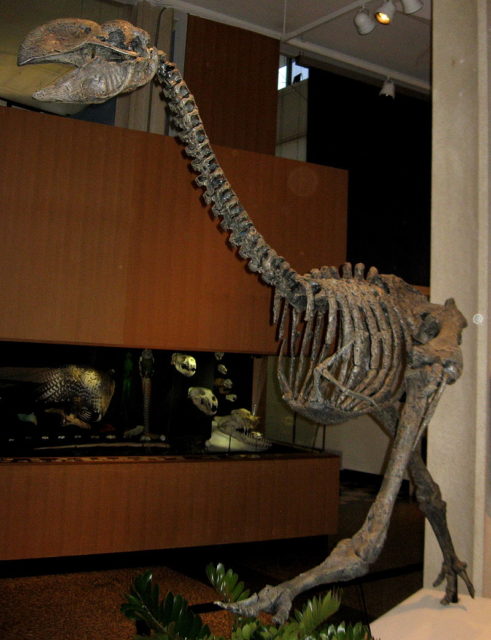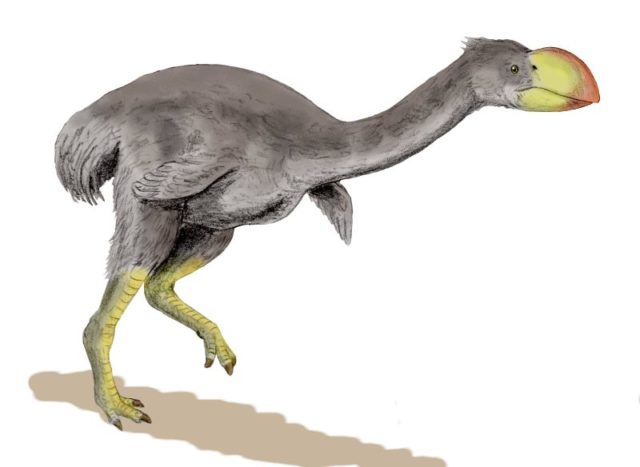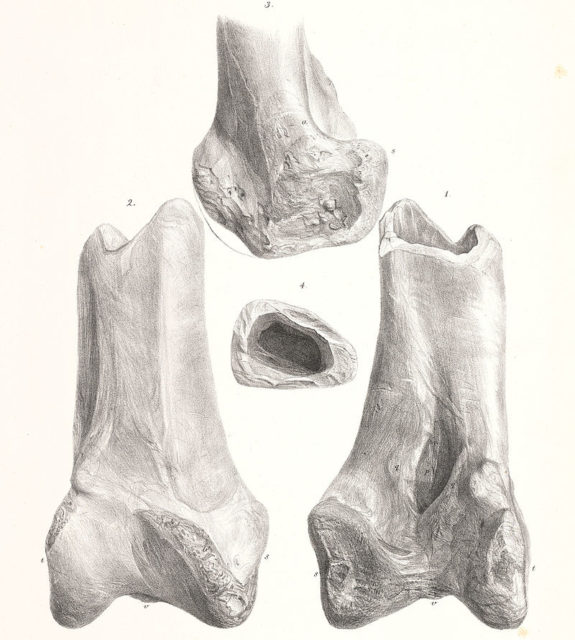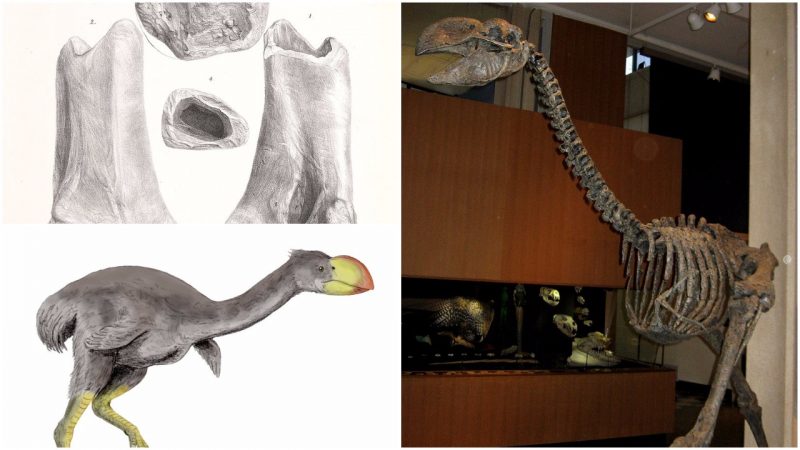Measuring 3 meters in height and weighing up to 65kg, Dromornis is a genus of prehistoric giant birds.
Dromornis belonged to Dromornithidae, a family of giant birds that lived 8 million years ago until less than 30,000 years ago.
Since millions of years by this time, Australia had been separated from the big southern landmass of Gondwana. Typical for animals in Australia is the fact that they had evolved slowly, completely isolated from the animals of the other continents.

Because of the very poor fossil record of D. australis (the type species of the genus) and a huge time gap between the two Dromornis species, D. stirtoni may ultimately be reassigned to the genus of Bullockornis.
Sometimes referred to as “Stirton’s thunder birds” or Mihirung birds, Dromornis stirtoni was around 3 meters (9.8 ft) tall and weighed up to 650kg. With a long neck and stub-like wings, the giant birds were taller then Aepyornis and heavier than the Moa.
Even though Dromornis stirtoni had really strong and powerful legs it is not believed to have been a fast runner.
The bird’s beak was large and immensely strong, leading some researchers to hypothesize that it was a herbivore that used its beak to shear through tough plant stalks. However, others theories suggest that the bird was a carnivore, due to the size of the bird’s beak.


Photo Credit
Dromornis was sexually dimorphic. Males were more robust and heavier, though not necessarily taller, than females.It inhabited subtropical open woodlands in Australia during the Late Miocene to the early Pliocene. There were forests and a constant water supply at Alcoota, one area where the Dromornis birds lived, albeit the climate was very changeable.
